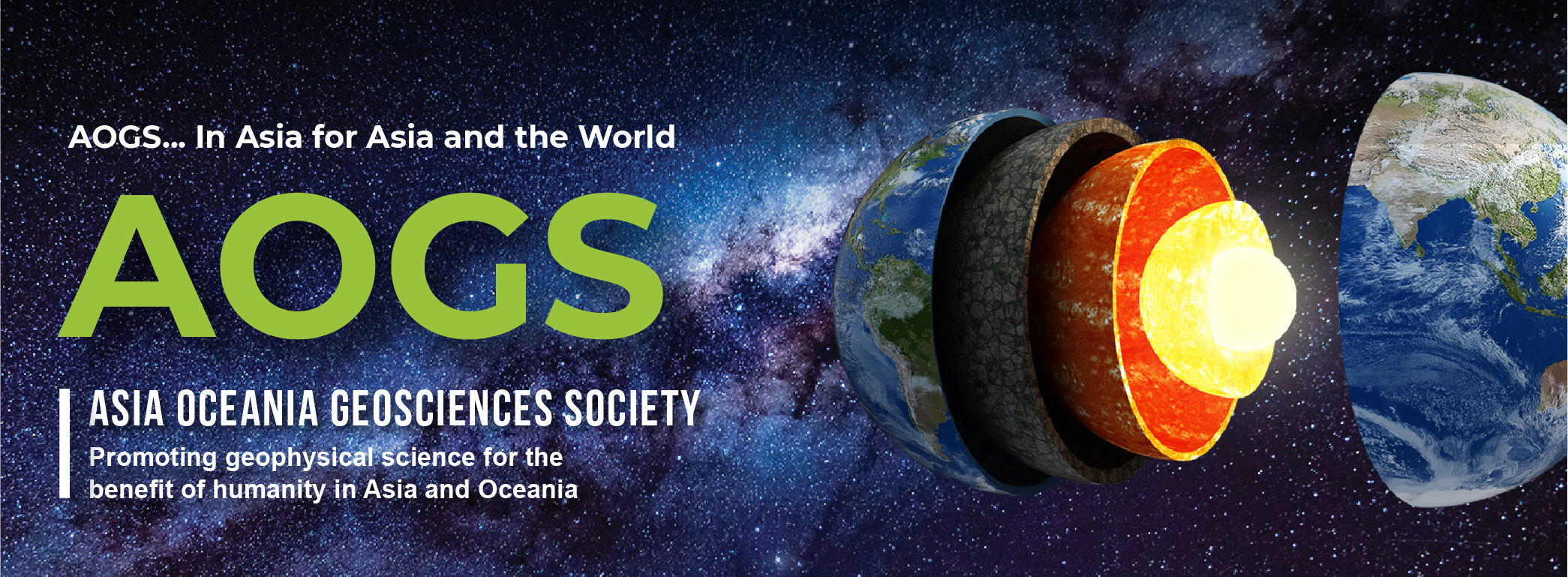
AOGS Kamide Lecture Award Recipient

2018-2019, Interdisciplinary Geosciences
Dr Anh Kim NGUYEN
Biography
Dr. Anh Kim Nguyen is a postdoctoral research fellow in the Center for Space and Remote Sensing Research, National Central University, Taiwan. She has been working as a researcher in Institute of Geography, Vietnam Academy of Science and Technology since 2008. She recieved M.S. degree from the Department of Cartography, Remote Sensing & GIS of VNU University of Science in 2012 and Ph.D. degree in the Graduate Institute of Hydrological and Oceanic Sciences, National Central University, Taiwan in 2017.
Dr. Nguyen’s research focuses on the eco-environmental vulnerability evaluation to provide useful information about ecological and environmental background for designing suitable policy measures to improve and restore environment; enhance understanding of natural disasters to assist mitigation, adaption, and management in response to risks resulting from natural hazards; and optimize urban greenspace management to creat a better and higher quality living environment for the human beings. She published her research outcomes in prestigious peer-reviewed journals, including Ecological Indicators and Remote Sensing with two additional manuscripts under consideration of publication by Science of the Total Environment and Applied Geography.
Dr. Nguyen actively participated in various international scientific events as a convener, invited speakers, session chair, or presenter. Nguyen’s non-scientific passions include traveling, taking nature photos, watching movies and listening classical musics.
Abstract
"Remote Sensing and GIS for Quantifying Eco-environmental and Social Vulnerability to Natural Hazards and
Manmade Disturbances for Improved Adaptive Capacity"
Natural variation and its complex interaction with anthropogenic processes significantly alter the eco-environment and regional climate patterns. In the context of climate change, Asian countries particularly in tropical climate zone with high humidity and unevenly distributed abundant precipitation tend to have frequent occurrence of drought and flooding. The increase in frequency and magnitude of severe weather extremes (torrential rain, summer heat waves, winter unusual snowfall, and urban heat island) likely linked to anthropogenic processes highlights the demands of quantifying eco-environmental and social vulnerability to enhance adaptive capacity.
Remote sensing data and Geographical Information System (GIS) have been instrumental in mapping the features of the earth’s surface for decades. Recently, there has been an increasing trend on environmental and social studies by use of remotely sensed data and GIS for mapping eco-environmental and social vulnerability, monitoring vector-borne diseases, and evaluating adaptive capacity. This lecture will provide further applications on how remotely sensed data and GIS can be used in vulnerability and adaptive capacity assessment corresponding to natural hazards, manmade disturbances, and health applications. We take advantages of remote sensing products and freely accessible datasets to create vulnerability and adaptive capacity maps of Vietnam in response to tropical storms and generate eco-environmental vulnerability map at multi-scale. This aims are to minimize the negative impacts of climate change and environmental management, promise the possibility of establishing open GIS database with highlighted regions for citizen participation, and provide deeper knowledge to support environmental and social and public health research.
In addition, this lecture will present the first quantitative map of eco-environmental vulnerability at a global scale using multi-indicators. Results suggest that: (i) at continental scale, human and nature play a dominant role in making disturbances in Asia and Africa more than the other continents. A possible reason behind may be due to the fact that in these regions human beings significantly depend on goods and services from eco-system and natural resources. The resulting pressure will continue to increase with a high rate of growing population and intensive infrastructure development. (ii) At national scale, China and India are the most vulnerable in Asia and in the world.
Finally, we will present a conceptual framework that incorporates 21 indicators to identify vulnerability and adaptive capacity (VAC) using geospatial techniques at regional scales over Vietnam. Results indicate large spatial differences in VAC and identify top-priority regions that need to enhance their adaptation to typhoons. The Southern Coastal area, South East and Red River Delta demonstrate high and very high vulnerability because of their physical features and the intensity of typhoons that frequently cross these parts of Vietnam. The lower Mekong Delta and Northern Coastal areas are vulnerable to typhoon-driven flood threats, and in particular compounded by sea-level rise.
